Motorcycle Financing
Are you ready to hit the open road without a care in the world and adventure on the horizon? Before you do, you’ve got to figure out how to pay for the two-wheeler.
Whether you are eyeing a sleek Harley Davidson, trusty Yamaha, or a custom-built ride—motorcycle financing could provide the golden ticket to turning your motorcycle dreams into reality.
Here’s everything you need to know before you start the motorcycle financing process without any speedbumps.
Motorcycle Financing—Key Questions & Points You Should Know About
- You can finance a motorcycle—both new and used!
- Financing rates and terms will depend on your credit score, financial health, down payment amount and loan terms.
- You can finance a motorcycle with bad credit, however, rates may be higher.
- You generally will require insurance to buy a motorcycle.
- Besides the loan costs, don’t forget to budget for gear, equipment, maintenance and other extras.
Can you Finance a Motorcycle In Canada?
Absolutely! Financing a motorcycle is a common route for riders who don’t want to drain their wallets in one swipe.
Banks, credit unions, private lenders, dealerships and manufacturer financing are the most common sources of financing for motorcycles. You can generally finance a new or used motorcycle with all the sources except for manufacturer financing.
New Motorcycle Financing
If you’re buying a new motorcycle from certain manufacturers such as Harley Davidson or Yamaha, you’ll often have the option of in-house financing. Moreover, you may find promotional deals such as 0% financing for a limited time, cash back deals and more.
Keep in mind that these perks usually require good or excellent credit scores. Similarly, do note that while new motorcycles may have good deals, they will generally be more expensive than their equivalent used counter
Used Motorcycle Financing
If you’re a more cost-conscious rider, you can consider purchasing a used motorcycle as they cost significantly less than a new one. Used motorcycle financing is available through many sources including banks, private lenders and used motorcycle dealerships.
That said, many lenders will have restrictions on the age and condition of the motorcycle you want to finance. Moreover, rates may be higher to finance a used motorcycle as it can be riskier to finance.
Best Powersports Lenders
| Provider | Powersport Vehicles | Available Terms | |
|---|---|---|---|
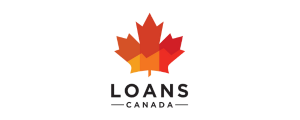 Loans Canada |
| Up to 60 months or longer | Learn More |
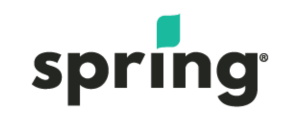 Spring Financial |
| Up to 84 months | Learn More |
 LendCare |
| Up to 180 months | Learn More |
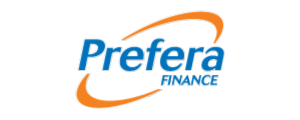 Prefera Finance |
| N/A | Learn More |
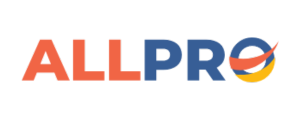 All Pro Financing |
| Up to 20 years | Learn More |
 Fairstone |
| Up to 36-120 months | Learn More |
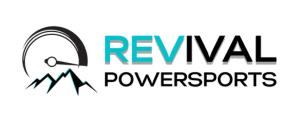 Revival Powersports Financing |
| Up to 20 years | Learn More |
 Canada Powersports Financing |
| N/A | Learn More |
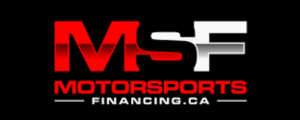 Motorsports Financing |
| Up to 180 months | Learn More |
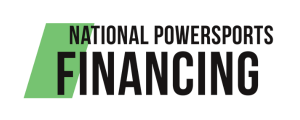 National Powersports Financing |
| N/A | Learn More |
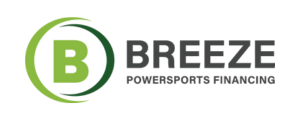 Breeze Powersports Financing |
| N/A | Learn More |
 TD Bank |
| Up to 84 months | Learn More |
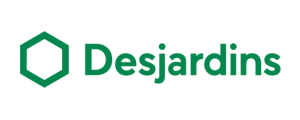 Desjardins |
| Up to 20 years | Learn More |
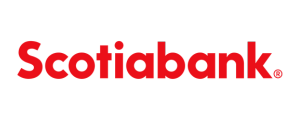 Scotiabank |
| Up to 20 years | Learn More |
 RBC |
| Up to 20 years | Learn More |
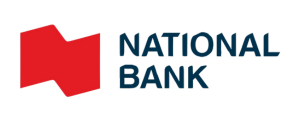 National Bank Of Canada |
| Up to 240 months | Learn More |
Motorcycle Financing Features
Before you walk into the dealership or bank, you should know what to expect so that you are properly armed with info before signing a loan agreement. Here are some key things to consider:
- Loan Amount: Whether you apply with a bank, private lender, dealership or manufacturer, loan amounts generally range between $5,000-$50,000 depending on the motorcycle, condition and your financial situation.
- Financing Rates. Rates can range from 4%-15%. However, those with limited or bad credit history may be charged a higher interest rate, up to 35% APR, due to greater perceived risk.
- Financing Terms. Repayment terms generally span between 12 to 84 months (1-7 years).
- Payments: Motorcycle financing comes with many payment options including monthly payments, bi-weekly and weekly.
How to Apply For Motorcycle Financing In Canada
You can apply for motorcycle financing in Canada in many ways, including:
- Dealerships: Many dealerships offer in-house motorcycle financing or the ability to directly connect you with a lender in their network. This option is best if you’re looking for a one-stop shop.
- Manufacturers: Some manufacturers offer direct financing such as Harley Davidson through Harley-Davidson Financial Services Canada or Yamaha through Yamaha Finance Canada. Like a dealership, this option also gives you the convenience of a one-stop shop.
- Private Lender: If you have bad credit or irregular finances, a private lender can be a good option. While their rates are often higher, their requirements are more flexible and applications are quick and easy.
- Banks And Credit Unions: A bank or credit union can also provide you with financing options. While some are offered through their partnered dealerships, others offer direct financing. You can also apply for a classic personal loan or line of credit to finance your motorcycle. However, with this option eligibility requirements are generally tough.
Manufacturers Financing
| Honda Financial Services | Learn More |
| Harley Davidson Financial Services | Learn More |
| Yamaha Finance Canada | Learn More |
| BMW Financial Services | Learn More |
General Requirements For Motorcycle Financing
Regardless of who you apply with, you’ll generally require the following:
- Down Payment: Be prepared to make a down payment of 10%-20% of the motorcycle price upfront.
- Credit Score: A credit check is a common requirement by most lenders. Even private lenders who place less emphasis on credit, may still require one.
- Documents: Proof of income/employment, bank statements and government-issued identification.
- Insurance and Drivers License. Depending on where you live, you may need both to qualify for financing.
Can You Finance A Motorcycle With Bad Credit?
Yes, you can! Many lenders and dealerships specialize in financing for borrowers with various credit backgrounds, including bad credit. They generally base their approval on your overall financial health, some may not even require a credit check.
Keep in mind, that you will face higher interest rates and stricter terms than financing options with a bank. However, providing a solid down payment can help with securing better rates.
Be sure to compare offers to ensure you are getting the best deal.
Can I Finance A Motorcycle If I’ve Filed A Consumer Proposal?
A consumer proposal is a settlement agreement to pay back a lender (without bankruptcy) when a borrower is unable to meet original term loans.
If you’ve filed a consumer proposal, you can still finance a motorcycle. There will be a few extra hoops to jump through as a consumer proposal negatively impacts your credit score—which makes lenders perceive you as a higher-risk borrower. However, some lenders specialize in working with individuals who possess less-than-perfect credit scores or are still in the process of financial recovery.
Just know that you can expect stricter terms, higher down payment requirements and higher interest rate charges.
What About If I’ve Declared Bankruptcy?
Yes, even if you’ve declared bankruptcy you can finance a motorcycle, however, it may be a bit more difficult.
Options will be limited as most lenders will only approve your loan if your bankruptcy is resolved. If you provide a co-signer and demonstrate a steady stream of income you could get approved.
That said, it is recommended that you wait a couple of years after being discharged from bankruptcy before getting a motorcycle loan. Lenders will generally perceive you as a high-risk borrower if you apply for a loan during bankruptcy or right after discharge, which can lead to higher financing rates, tougher down payment requirements and stricter terms.
How Much Will Your Motorcycle Loan Cost You?
Motorcycles can vary widely in price. A basic used motorcycle could run up to $5,000 while a brand-new or custom motorcycle could be priced up to $50,000 or more. The cost of financing will depend on your loan terms such as the loan amount, interest rates and term of the loan, which is influenced by your credit and financial health.
Leasing vs. Financing A Motorcycle
Leasing refers to renting the motorcycle instead of owning it. Let’s run through the differences:
- Leasing. Leasing has lower monthly payments, but you do not own the bike at the end of the lease term. This works very well for those who want a lower monthly payment and for those who upgrade their bike more frequently.
- Financing. Financing has higher monthly payments, but you own the bike outright. This is ideal for long-term use or if you see good value in the bike.
Additional Factors To Consider Before You Ride
Owning and servicing a motorcycle isn’t cheap. Here are a few extra costs to consider and budget for before buying a motorcycle.
- Oil changes
- Tires
- Repairs
- Storage: if you don’t have a garage, you may need to store it at a storage facility during off-season periods.
- Winterization: Depending on supplies needed you’ll need a few hundred to properly maintain your car in the winter (including fuel stabilizer, oil and oil filter, cleaning supplies, battery maintainer, and motorcycle cover).
Don’t forget gear costs like helmets, gloves, and boots, which can cost several hundred dollars or even a couple thousand dollars.
How To Get A Motorcycle Driving License In Canada?
Getting a motorcycle license typically involves a graduated licensing process not unlike a driver’s license for a car. This process may include written and road tests and each province has jurisdiction over the specific rules.
Learn more: How To Get A Driver’s License In Canada
Do You Need Insurance For A Motorcycle In Canada?
Insurance is mandatory to ride a motorcycle in Canada and may be required by lenders when trying to finance one.
Motorcycle insurance offers:
- Third-Party Liability protection
- Collision Coverage
- Comprehensive Coverage
- Uninsured Motorist Coverage
You can get insurance through various providers such as the banks, credit unions or other insurance providers. You can also get insurance coverage directly from a dealership when you are purchasing a new motorcycle.
Learn more: Motorcycle Insurance In Canada
Bottom Line
Financing a motorcycle in Canada is certainly a ride you can handle—whether you’re looking at a Harley-Davidson, Yamaha, or a custom chopper.
With the right preparation and a clear understanding of your options, you can navigate the process like a seasoned pro.
So, what are you waiting for? Rev up your dream and take the first step today!

